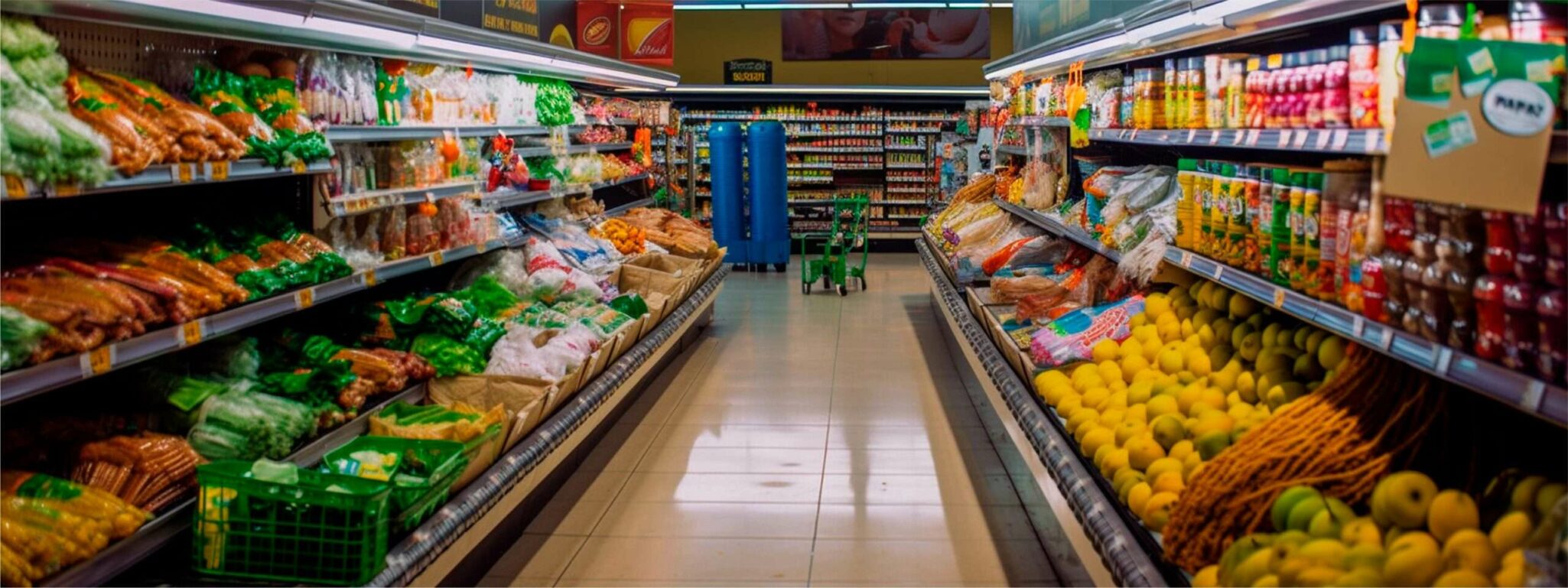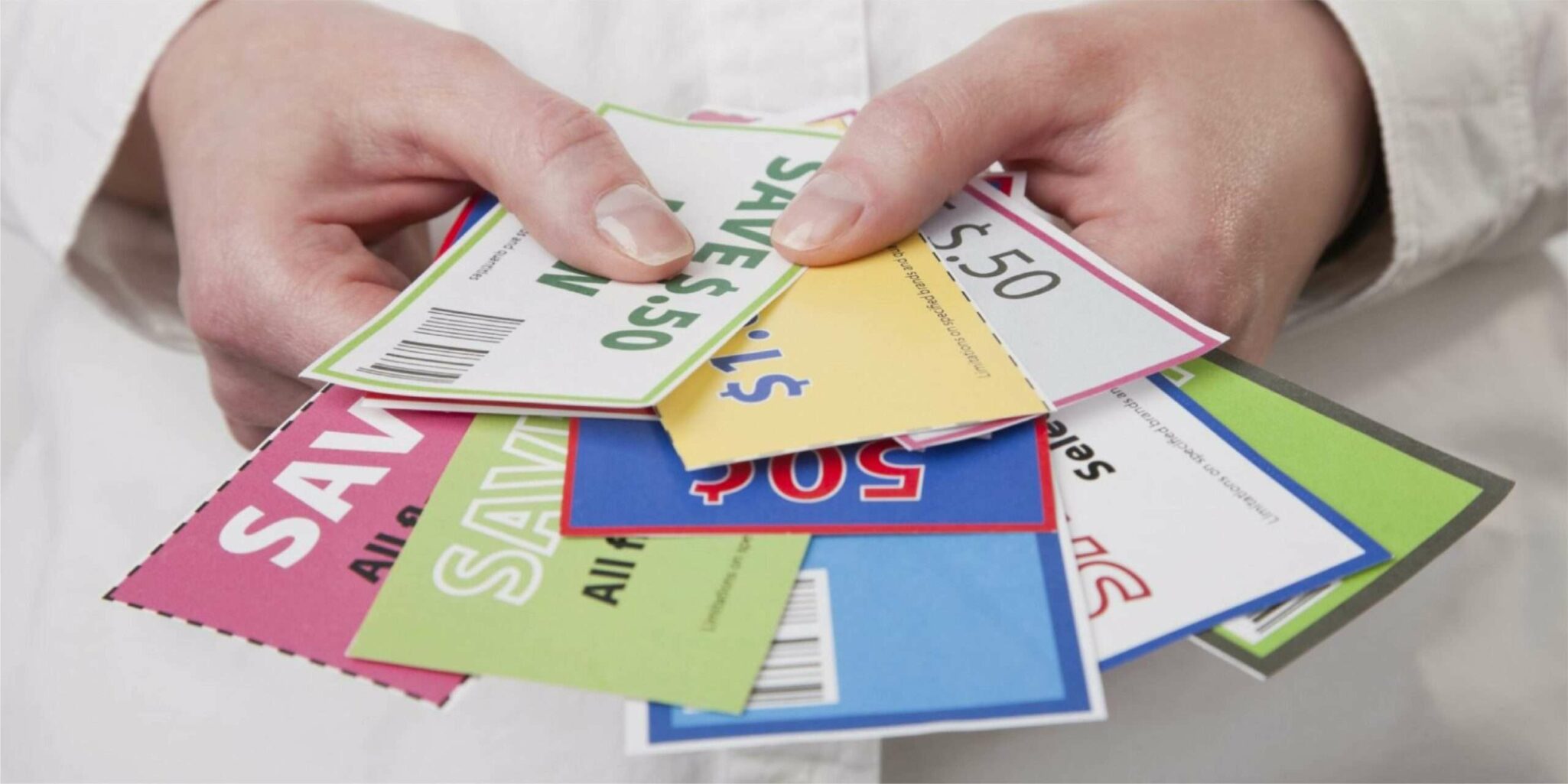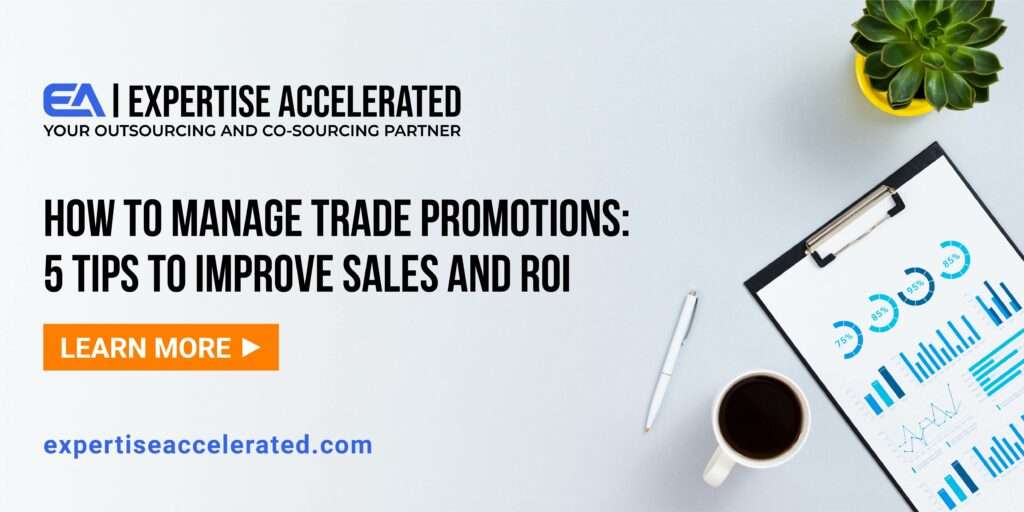How to Manage Trade Promotions: 5 Result-Driven Tips to Skyrocket Sales and ROI
Effective trade promotions must deliver tangible outcomes to be truly effective.
You might have had a good handle on your team’s trade promotion expenses last quarter, but do you know exactly what return on investment (ROI) those efforts brought in?
According to Forrester, consumer packaged goods (CPG) brands spend over $500 billion annually on trade promotions. With such a hefty investment in these retail campaigns, there’s a big responsibility to ensure they’re executed according to plan and positively impact sales.
This blog post outlines the top 5 result-driven tips to manage trade promotions and skyrocket sales.
5 Result-Driven Tips to Manage Trade Promotions
In his article in Applied Marketing Analytics (2020), Colin Bunn argues that due to the enormous investments and efforts involved in consumer packaged goods promotions by manufacturers and retailers, implementing a thorough promotional optimization program should be a fundamental operational focus rather than merely a goal.
Therefore, we’ve outlined the top 5 tips below to assist you in effectively managing trade promotions:
1- Set Clear Objectives and Key Performance Indicators (KPIs)
Successful trade promotions help improve the company’s bottom line.
But how do you measure how successful your trade promotion was?
One big reason trade promotions fail is that management repeats their old plans without measuring any results. The same old tactics are carried out year after year without knowing whether that plan is actually driving sales.
Key performance indicators are like the GPS for managing trade promotions. They give you direction about what to do next and what action to take to move closer to achieving your goals.
KPIs also help you know how much you have completed (or not) via your TPM.
KPIs for Trade Promotion Optimization
The KPIs that help provide insights to optimize trade promotions are lift, sales increase, trade spend, trade rate percentage, and ROI.
Before you plan your trade promotions for the next quarter, it’s a good idea to measure your KPIs from previous promotions.
Promotion Lift
Promotion life measures the percentage increase in sales or other relevant metrics during the promotional period compared to non-promotional periods. It helps assess the campaign’s direct impact on driving consumer behavior.
For example, a promotion lift would quantify the increase in sales or foot traffic for a physical outlet. Foot traffic refers to the number of consumers visiting the store during the trade promotion period. Increased foot traffic demonstrates the campaign’s ability to attract customers to physical retail locations.
Sales Increase
Measure the company’s sales change during and after the campaign compared to baseline sales figures. This KPI assesses the campaign’s impact on driving revenue.
Return on Investment (ROI)
ROIs evaluate the campaign’s financial effectiveness by comparing the costs of marketing efforts to the revenue generated from increased sales.
Perhaps profit on increased sales/trade spend (can we differentiate this?) color.
A positive ROI indicates that the campaign generated more revenue than the investment made.
Trade Rate Percentage
Trade Rate Percentage = (Promotional Sales / Total Sales) * 100
Monitoring the trade rate percentage helps businesses understand the impact of their promotional activities on overall sales performance. It answers crucial questions such as:
- How have our recent trade promotions impacted consumer interest and product demand?
- Has a higher trade rate percentage increased product visibility on shelves or online platforms?
- Have any specific products seen a significant uptick in sales during the promotions?
Many management teams only focus on lead generation and closing sales. However, retail companies also launch marketing campaigns to improve their brand image and engage with consumers.
Trade promotions are also planned to change consumer perception and awareness about the brand. The KPI can be measured by conducting surveys before and after the event.
For instance, in 2019, Target launched its “Target Run and Done” campaign to highlight the convenience and variety offered by Target stores. The campaign featured TV commercials, digital advertising, and social media promotions showcasing how Target stores provide everything customers need in one convenient trip, from groceries to household essentials to apparel.
Target’s “Target Run and Done” campaign resonates with consumers by emphasizing the brand’s commitment to providing a diverse range of products and a seamless shopping experience.
2- Focus On The In-Store Display
How your product looks, where it is placed, and how your customers see it at a retail outlet make a big difference. That’s why products at the same level as a consumer sell faster than those above or below.
A great visual merchandising strategy plays an important role in the ROI. Different products have different retail displays that are ideal for them.
Here are some key aspects that your trade promotion strategy should address regarding in-store displays:
- Attractive signage and messaging with your display will get your products noticed by the shopper.
- Entryway displays, end caps, and window displays increase your visibility to the buyer.
It is not necessary to design a lavish retail display. (Do you know millennials prefer minimalistic designs over extravagant ones? So, if you are targeting them, make sure your designs are no-fuss, clean, and modern.) Even the simplest displays can increase sales if designed with the end buyer’s interests in mind and backed up with a solid visual merchandising strategy.

Wonder Vault Display: Oreo’s Innovative Retail Experience & Trade Promotion
Several years ago, Oreo, known for its innovative marketing campaigns, created the “Wonder Vault” experience in select retail locations. The display resembled a whimsical “vault” or treasure chest, often oversized and colorful, evoking a sense of excitement and curiosity.
Inside the Wonder Vault, various Oreo products, including different flavors, limited editions, and packaging sizes, were showcased in a visually appealing manner. Some displays included interactive elements like touch screens or QR codes that shoppers could use to unlock digital content, such as recipes, games, or behind-the-scenes videos related to Oreo.
The Wonder Vault’s design and messaging aligned with Oreo’s brand identity of fun, creativity, and indulgence, creating a memorable experience for shoppers.
Location Strategy:
The Wonder Vault displays were strategically placed in supermarkets or convenience stores in high-traffic areas, ensuring maximum visibility and consumer engagement.
This example demonstrates how Oreo used creative design, interactive technology, and thematic consistency to enhance the retail experience and drive consumer engagement with their products.
Such displays attract attention, strengthen brand loyalty, and encourage impulse purchases through an immersive and memorable retail environment.
3- Offer Deals And Discounts
93% of US consumers regard offers and discounts as key factors in buying. Hence, your trade promotion strategy should incorporate temporary price reductions. This approach encourages existing customers to buy more and attracts new ones.
But remember: timing is crucial.
For instance, leveraging these promotions during peak shopping periods like the holiday season can significantly boost sales. Manufacturers should collaborate with retailers to initiate promotions well in advance, ideally starting a month before, to appeal to early planners. Delaying discount offers until the last minute risks getting lost among competitors, vying for attention during the busiest shopping periods.
Temporary Price Reductions (TPR)
Temporary price reductions (TPRs) play a significant role in the trade promotion strategies of consumer packaged goods (CPG) products, particularly those categorized as essential items or fast-moving consumer goods (FMCG). These promotions involve a temporary price decrease, typically at least 5% from the regular price, to stimulate consumer interest and drive short-term sales.
Both IRI and Nielsen highlight one key aspect of TPRs: their temporal nature. Initially intended as a short-term promotional tactic, TPRs are designed to create urgency and encourage immediate purchase decisions among consumers.
Flash Sale Promotions
Flash sale promotions are a powerful strategy for generating excitement about your brand and capturing the interest of potential customers who may not have previously considered purchasing from you.
Dramatically slashing prices on select items briefly creates a sense of urgency that drives impulse purchases. This approach acts as a magnet, drawing new customers to your online and physical stores, where they will likely explore and purchase additional products during their visit.
4- Coupons & Promo Codes
Coupons and promo codes can be addictive. Once customers experience the benefits (a.k.a. cost savings) they get from using them, it’s hard to ignore them.
From supplements to detergents and cleaning products, coupons and promo codes allow companies to understand consumers’ buying habits and optimize their campaigns accordingly.

5- Leverage Data and Analytics
Data analytics gives you a deeper understanding of your target customers and allows you to determine the most effective channels for communicating with them. That is why data analytics forms the core of TPO, empowering businesses to analyze vast datasets, discover patterns, and forecast outcomes with precision.
Leveraging data and analytics helps marketing teams learn how to effectively communicate their product’s value and refine the conversion journey to make prospects convert more efficiently. This helps increase conversion rate and lower cost per acquisition, ultimately leading to a higher ROI: getting you more of what you want for less.
Moreover, data analytics allows firms to anticipate promotion outcomes in real time. With access to up-to-the-minute data, companies can promptly modify strategies if promotions fail to yield expected results. This agile approach enables quick identification and adjustment of underperforming promotions based on data-driven insights.
Read here to learn more about optimizing trade promotion ROI through data analytics.
Conclusion
CPG manufacturers and retailers spend vast amounts of time and resources managing trade promotions. Yet many promotions fail to generate any ROI or positively impact sales. This blog post provides 5 result-driven tips that teams can utilize to ensure rewarding trade promotions management.


